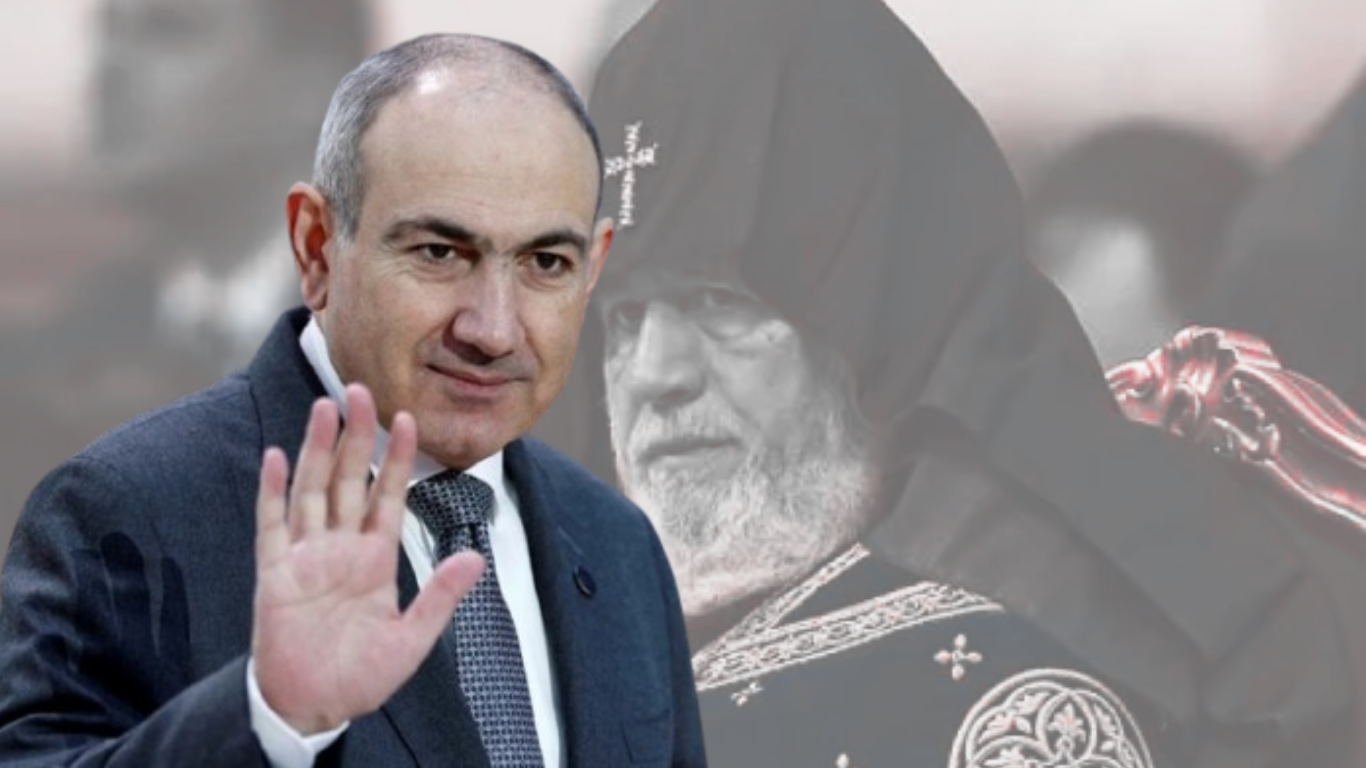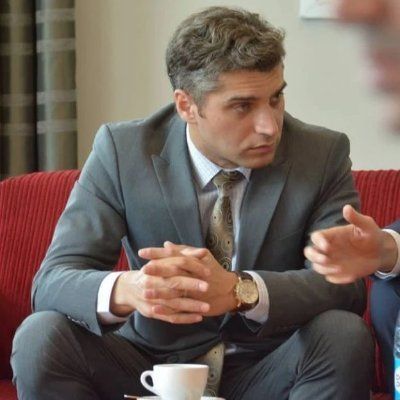Pashinyan’s battle with Church reveals Armenia’s deeper struggle between reform and reality

Armenian Prime Minister Nikol Pashinyan’s latest comments, interpreting his party’s victory in Vagharshapat as a “mandate” to challenge the authority of Catholicos Karekin II, expose far more than a quarrel with the Armenian Apostolic Church. They unveil the ideological crossroads at which Armenia now stands: between old institutions that symbolise historic identity and a political leadership determined to reinvent the country’s trajectory after decades of regional isolation, military defeat, and economic stagnation.
Pashinyan’s assertion that the public has given him the green light to “liberate the Mother See of Etchmiadzin” is an unmistakable challenge to the Church’s leadership. Vagharshapat is no ordinary municipality; it is the spiritual heart of Armenia, the home of Echmiadzin’s Mother See, and thus the very symbol of the Armenian nation. For Pashinyan to frame a local election victory as a sign of support for weakening, reforming, or even removing Catholicos Karekin II suggests he sees the Church not simply as a religious institution but as a political actor resistant to his vision.
For years, the Armenian Apostolic Church has been among Pashinyan’s most vocal critics, particularly regarding the 2020 defeat in the Second Karabakh War and his subsequent peace negotiations with Azerbaijan. The Church’s messaging has often aligned with nationalist factions that portray compromise as capitulation. From Pashinyan’s perspective, the Church stands in the way of what he calls a “peaceful and democratic Armenia”, a phrase that, in his rhetoric, now includes restructuring or disempowering the Church’s highest authority.
Yet Pashinyan’s motives cannot be analysed through the narrow lens of domestic politics alone. Armenia’s broader geopolitical reality is at the core of this struggle. After decades of self-imposed and externally reinforced isolation, largely stemming from the occupation of Azerbaijan’s Garabagh and the resulting closure of Turkiye’s borders, Armenia has suffered persistent economic stagnation. With few open trade corridors, limited regional cooperation, and a weakening security alliance with Russia, the country faces the stark truth that it must finally choose peace over perpetual grievance.
In this context, Pashinyan’s push for peace with Azerbaijan is not merely ideological, but it is pragmatic and existential. Armenia’s blockade has been a long-standing wound, one that successive governments failed to address because they clung to territorial claims they could no longer sustain. The closure of the Turkish-Armenian border, in particular, has strangled economic potential, isolating Armenia from the vast opportunities of regional connectivity, energy networks, and East–West transport routes.
By moving toward peace with Azerbaijan, Pashinyan aims to unlock these opportunities and reposition Armenia within the South Caucasus. Reconciliation would transform Armenia from a besieged outpost to a participant, perhaps even a beneficiary, of emerging regional integration projects. The alternative is continued economic suffocation, political instability, and the intensifying erosion of Armenian sovereignty.
Despite this, many within Armenia perceive the peace agenda as existentially threatening to national identity. This is where the Church’s resistance becomes significant. It embodies the traditionalist worldview that equates compromise with national betrayal, a sentiment deeply embedded in Armenian political culture. From its perspective, Pashinyan is stripping away sacred narratives to appease geopolitical realities.
But is Pashinyan’s confrontation with the Church truly about peacebuilding? Or is it more about consolidating power to push through a controversial but economically necessary realignment?
To be honest, the biggest and irreversible step that Nikol Pashinyan must take in the direction of peacebuilding is constitutional reform. Yet Yerevan still approaches this with a shifting position, sometimes appearing willing and at other times showing reluctance. Many believe that if the Church, which Pashinyan is wary of, were to collapse one day, no barrier would remain in his path, creating favourable conditions for him to easily remain committed to the essential obligations. Perhaps this is also connected to Pashinyan’s search for alternative ways to pull his country out of economic turbulence. There is merit to the argument that Pashinyan genuinely sees peace as a foundation for Armenia’s long-term transformation. Unlike previous governments, he acknowledges that Armenia’s survival cannot depend solely on Russia’s increasingly unreliable patronage. His rhetoric frequently invokes ideas of sovereignty, independence, and the need to build democratic institutions free from oligarchic and clerical influence.
However, it is equally clear that he is attempting to neutralise domestic obstacles that could derail his peace initiative. The Church remains one of the strongest moral authorities in Armenia, capable of mobilising opposition in ways that political parties cannot. To secure the peace agenda, and thus Armenia’s economic revival, Pashinyan may feel he must diminish the Church’s political voice.
Critics argue that this sets a dangerous precedent: weaponising electoral victories to justify interventions in religious affairs risks polarising Armenian society even further. The Church is not merely a political rival, but it is a symbol woven into Armenian identity. Any attempt to forcibly reshape its leadership may deepen internal fractures at a moment when unity is essential.
What is undeniable, however, is that Armenia must confront the consequences of decades of strategic miscalculations. Pashinyan’s policies, whether motivated by reformist idealism or political pragmatism, reflect a shift toward realism. Peace with Azerbaijan, long resisted, long delayed, offers Armenia its first genuine chance in decades to escape isolation. The opening of borders, the revival of trade, and the potential new partnerships across the region could give Armenia the economic lifeline it desperately needs.
The question now is whether Pashinyan can pursue this new direction without igniting a destructive internal conflict with the Church. History shows that national transformations often come with institutional clashes. Armenia’s future stability will depend on whether this confrontation is managed peacefully or becomes another source of national fragmentation.
Here we are to serve you with news right now. It does not cost much, but worth your attention.
Choose to support open, independent, quality journalism and subscribe on a monthly basis.
By subscribing to our online newspaper, you can have full digital access to all news, analysis, and much more.
You can also follow AzerNEWS on Twitter @AzerNewsAz or Facebook @AzerNewsNewspaper
Thank you!

